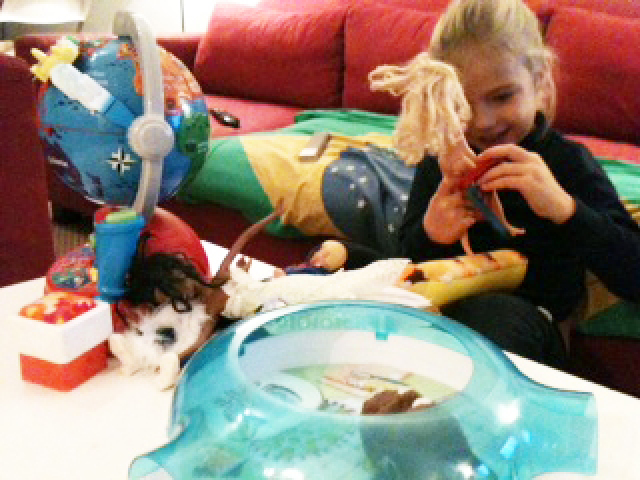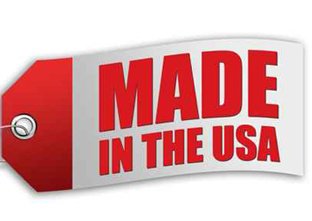
Plastic shakes up the toy industry
Nostalgia isn’t what it used to be
IYou can’t turn the clock back. Not more than 50 years ago most toys were of metal or wood. They were what the grandparents of today knew and loved. Come Christmas-time, many an eye mists over at childhood reminiscences of a wonderful little white-painted tin car or beautiful porcelain-eyed doll ... Those nostalgic objects have since been long gone from the toy catalogues.

A hundred years young
 The first plastics were developed in the 19th century. Celluloid was invented in 1869 to replace the ivory used in the manufacture of billiard balls amongst other things. Contemporarily it was Bakelite, whose big benefit was to retain its original shape when heated and hardened. Oil was cheap, and the toy industry would gradually take over these new materials which enabled an object to be reproduced quickly and in large numbers from the same mould.
The first plastics were developed in the 19th century. Celluloid was invented in 1869 to replace the ivory used in the manufacture of billiard balls amongst other things. Contemporarily it was Bakelite, whose big benefit was to retain its original shape when heated and hardened. Oil was cheap, and the toy industry would gradually take over these new materials which enabled an object to be reproduced quickly and in large numbers from the same mould.
The first plastic toys made of celluloid appeared in the late 19th century. The most archetypal must surely be the bather with moulded and fully hand-painted blonde hair. But it was not until World War II that plastic toys became firmly established.
Uncle Sam takes the top spot

In the 1930s, Germany was a world-leading toy manufacturer with huge exports to the United States. But the rise of fascism and the looming world war would bring that intercontinental trade to a grinding halt.
Would American tots be left without gifts at Christmastime? Not if a responsive U.S. industry had anything to do with it, as it began churning out toys to satisfy its huge market.
Admittedly, production in the war years slowed down because toys were not a priority for industry,but in the immediate post-war period, U.S. manufacturers finished the job and imposed their presence on the European market.
Soaring popularity
Wood and metal proved unsuited to the mass production needed to meet the ever-growing demand for toys.
By the late 1940s, Fisher Price, then a fledgling firm, a bare ten years old, was the first company to make its entire product range in plastic. It was such an instant hit that rivals like Ideal began to copy it with the staggering sales achievement of over three million plastic telephones in just a few months.
Hasbro would become the name in boys’ toys, marketing the famed GI Joe in the 1950s, which would sell nearly ten million copies over the years.
It was not until the end of that decade that the Barbie doll, to become the undisputed star, would appear on the market: and whose sales have now topped the billion mark!

 These eye-catching figures are down to the progress made by the plastics industry’s post-war development push into new materials.
These eye-catching figures are down to the progress made by the plastics industry’s post-war development push into new materials.
It was then that thermosetting plastics became widespread. These are polymer materials which, when heated, solidify and become irreversibly rigid. Celluloid, considered dangerous because it is highly flammable, was ousted by softer-textured, almost skin-like vinyl. Highly robust polystyrene and polyethylene were used for toys subject to heavy, and often merciless, use by children, like toy tea sets.
Ever more creative
 From that time, there was no stopping the boom in plastic toys.
From that time, there was no stopping the boom in plastic toys.
Even the oil crisis of the 1970s would not stifle production – anything but! The demand was still there, so manufacturers had to adapt. And so they did, with the added fillip of ever more creativity, such as licensing cartoon characters to jump on trend bandwagons.
Shapes, colours, functions, "playability," strength...all benefits accorded by plastics. Today, plastic toys account for 90% of the market.
The toy industry has been a mature market for decades now.
But is it resting on its laurels? To think so would be wrong, and, above all, will underestimate the pestering-power of children demanding their share of annual novelties and innovations.
From this point of view, too, plastic is super-serviceable, with manufacturing processes so well-oiled that new toys can be rushed out at dizzying speeds. Thereafter, it is all about marketing and positioning, because winning over these future consumers is anything but plain sailing!

 But manufacturers have also turned their inventiveness towards fostering child development. Creative play became trendy and plastic, once again, seized the chance.
But manufacturers have also turned their inventiveness towards fostering child development. Creative play became trendy and plastic, once again, seized the chance.
Take Play Doh for example, another U.S. company which, in the 1970s, reinvented modelling clay by coming up with a toy line combining plasticine, made to a closely-guarded formula, with rigid plastic accessories. One of its stars is the party clown whose Play Doh hair is extruded from his head by a piston.
Meccano, over a century old and most famed for its metal construction sets, now makes some of its range in plastic.
Good old parlour games go plastic
A parlour game comprises a set of rules of varying originality, pieces, dice, a board, and, not infrequently, cards...Yet even these games use different plastic manufacturing techniques to increase their appeal. It all started in the late 1960s when MB (now Hasbro) put out a new version of its hundred-year-old “Game of Life.” It started out as a board game with simple rules and a fairly standard layout, not unlike snakes and ladders. While the basic rules have not changed, the design has evolved beyond recognition: the board now sports three-dimensional plastic buildings and bridges. It was an instant smash-hit, becoming one of the brand’s great best-sellers and proof that a slightly old-fashioned game could be revived by a make-over. The competition was quick to learn the lesson. Monopoly now also offers a version that lets players build plastic towers and factories instead of plopping down little houses on the board. It has made the game that much more fun.





